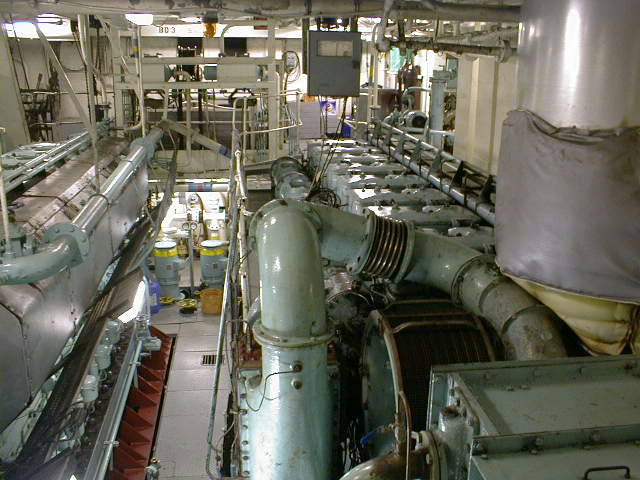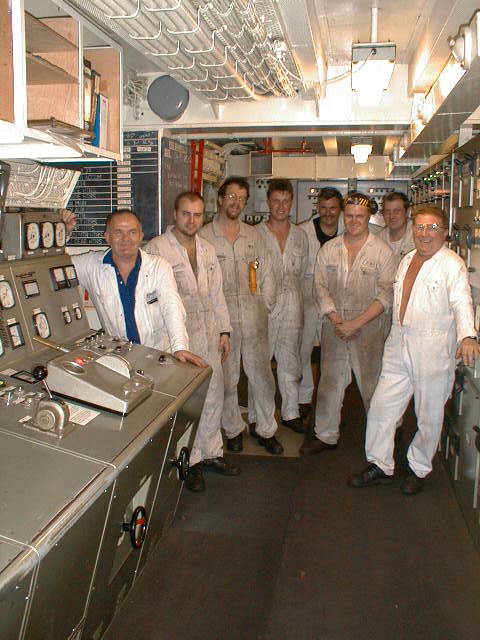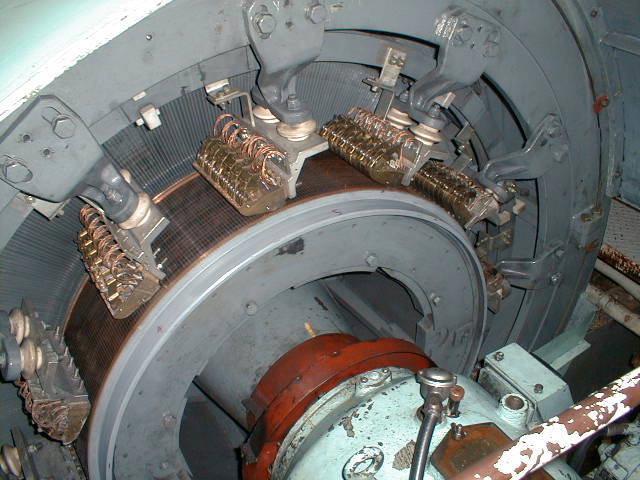| Date | Sunday 25th April 1999 |
| Time | 1200 (UTC-1) |
| Position | Latitude 14°11' North
Longitude 024°30' West |
| Next destination | Grimsby (2796.1 Nautical Miles) |
| ETA | 6th May 1999 @ 0846UTC |
| Total distance | 29159.4 Nautical Miles
(Since departing Grimsby on 17th October 1998) |
| Current weather | Thin, high overcast |
| Wind | North x North East Force 5-6 |
| Sea state | Slight sea, moderate swell |
| Air temperature | 24.2°C |
| Sea temperature | 21.2°C |
Ship's
track - Updated every six hours from the weather observations sent
to Bracknell weather centre - direct from BAS
homepage.
Summary
During Monday the ship continued northwards, following the Brazilian coast. At 2100 Recife was passed and this was the point where the course was to be changed and we turned towards the Cape Verde Islands (and in particular Fogo, which will be our next sighting of land). Tuesday saw continued good weather, although as we were now moving away from Brazil and into deeper water, the swell increased slightly and there was a slight amount of movement. Chipping on the Focsle has now been finished and the crew, assisted by a number of FIDS are busy painting. During Tuesday evening the ship started to pass through the ITCZ (Inter Tropical Convergence Zone), the area where the air masses of the South Atlantic meets the air of the North Atlantic and an area of rain showers and thunder storms. So, no surprise that on Wednesday morning the sun was not to be seen but a steady, tropical downpour was present. As the ship heads into deep sea it is unlikely that there will be a great deal in the way of shipping to see, although on Wednesday afternoon a group of between eight and ten pilot whales were sighted. Pilot whales are on average about 5.5 metres in length and weigh between 1.5 (for females) and 3.3 tons (for males) and are often in groups of between ten and one hundred.
At 2125 UTC on Wednesday the ship crossed the Equator at 031°13'W. There were some small celebrations on deck during the course of the evening but alas King Neptune was not available to visit us on this occasion, so several people breathed a huge sigh of relief!
In the early hours of Thursday morning the ships clocks were advanced a further hour, to UTC-1. On Friday afternoon, as part of the ships regular fire and boat drill exercises, a demonstration was given on the correct use of different types of fire nozzles, including Hi-ex foam and a first-aid demonstration of resuscitation techniques, followed by a boat drill.
Saturday evening and another barbecue was held, once again with a good spread of food available. The weather is now starting to cool down as we work our way north and the North East Trade Winds start to blow. The temperature in the Engine Room has now dropped down to a nice 33°C, making life much more comfortable for those that are working down there.
The general maintenance work that is being carried out is going well, with the Focsle, the Main Deck and number 1 and 2 hatch covers all looking lovely in a fresh coat of paint. All the wooden hand-rails have been rubbed down and given a good varnish. The various stores and lockers are getting a good clean, all in preparation for our arrival in Grimsby on May 6th.
This weeks page is somewhat lacking in information, mainly due to the
lack of things to see on the passage from South America to the Cape Verde
Islands. It is hoped that during the forthcoming week there will be more
to report at we will be passing several islands (starting with the Cape
Verde group this evening) and with this there may well be sightings of
bird and sea life.
The ship is fitted with two main engines, being Mirrlees Blackstone KM8 Majors. Each engine capable of producing 2786 Break Horse Power (bhp) and is directly coupled to two AEI D.C. Electric Generating sets. The output from each main engine/generator combination is 700 Volts at 2700 Amps (maximum). This is used solely to provide power to the Main Motor, which is a 5000 Shaft Horse Power D.C. reversible tandem electric motor weighing approximately 23 tonnes. From the motor extends the propellor shaft, on the end of which is fitted a Variable Pitch Propellor (VPP).
The VPP has four blades, and is designed so that by rotating at a constant speed (normally between 200-250 RPM, depending on whether one or two main engines are being used) and adjusting the pitch of the blades, the vessels speed can be adjusted. By adjusting the pitch of the blades it is also possible, regardless of the motor direction (clockwise or anti-clockwise), to move ahead or astern. The motor is normally run in one direction. On occasions whilst working in ice it is necessary to run the motor in the opposite direction to gain maximum power astern.
To provide general power throughout the vessel, for hotel services (hot and cold water, heating, lighting and power to the ships cranes etc.), there are three Ruston APCZ/2 Generator sets on board and these each produce 600 kVA at 440 Volts, and this will then be transformed down to 240 Volts for domestic use where required..
To provide hot water and steam heating (used when in the Antarctic) the ship is fitted with one oil fired boiler and one composite Spanner Swirlyflo vertical boiler. These run at 80 PSI.
The ship uses Marine Gas Oil, normally winter grade, and the approximate fuel consumption on one engine is 12 tons per day, with two engines this would rise to 24 tons per day. Needless to say the fuel figures do vary depending on just what sort of work is being carried out and factors such a the weather will also make changes to the consumption. The ship has a storage capacity of 1190 tons, this includes up to 300 tons for base use and 4,300 gallons of lube oil is also carried for use in the main engines.
Fresh water can often be a problem on board during the passage to Halley, when the ship is full to capacity with FIDS traveling south. The fresh water capacity is 350 tons and there is a Weirs Evaporator on board that is capable of producing 11 tons of water per day, whilst the vessel is moving. This utilises waste heat from the main engines. It is not normal practice to produce water whilst the ship is not moving (for example at anchor or stopped in ice).
The Engineers are also responsible for maintaining the cold stores and cargo cool rooms. There are three cold stores, for ships provisions, working at temperatures between +4°C and -18° and two cargo cool rooms running at between -1°C and +1°C, one of which houses the aquarium which is used for transporting fish and beasties from Rothera to the UK.
The Engine Room is also fitted with a fully
equipped workshop, enabling the Engineers to carry out most forms of repair.
Forthcoming Events
Clocks to be advanced to UTC on Sunday night. Pass the Cape Verde Islands on Sunday evening, then about 50 miles to the west of the Canary Islands and towards the end of the week close in to the western side of Madeira.
GM0HCQ/MM QRV 14052kHz @ 1700z & 2100z and 21052kHz @1200z. Please note change of times.
The next update will be written on Sunday 2nd May 1999 and should be
published on Monday 3rd May 1999.



Last updated 28/04/1999 - webmaster@dartcom.co.uk